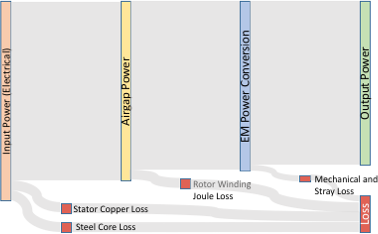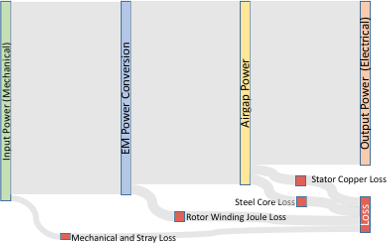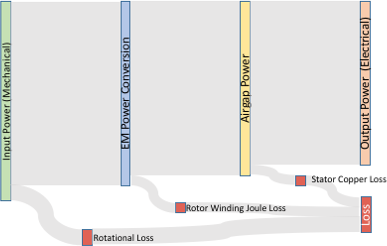Losses in AC machines
Losses in AC machines can be grouped as:
- Resistive losses (I2R) in the stator circuit
- Resistive losses (I2R) in the rotor circuit
- Iron losses due to fundamental frequency ac flux in the core. These are mostly in the stator core.
- Mechanical losses. These include friction in the bearings and a term called windage. (wind (like the weather) -age) Windage is due to air turbulance and shear as the rotor and stator move past each other
- Stray losses. The other parts that aren't easily calculated. These include harmonic losses in the core and current flow throuhg the core (rather than staying in the conductors where you would like it to be)
Motor power flow
In a three phase motor, the input power is the electrical power flow at the terminals. Power is then lost in the stator circuit, and the stator core. The remaining power is transferred to the rotor. Deducting the rotor losses, one obtains the power converted to the mechanical system. At this point stray losses and mechanical losses are deducted and the remaining power is the output power available to the mechanical load. In reality, core losses occur on both the rotor and stator and stray losses are usually electrical losses distributed throughout the motor. Core losses are allocated to the stator since this is where most of the core losses usually occur and stray losses must be taken off after the mechanical power is converted as it is not simple to include them in the electrical model.
In some cases, to simplify matters stray, core and friction and windage losses are grouped as "rotational losses" and all deducted after calculating the power converted to the mechanical system. These two loss calculation techniques are illustrated below.


Generator power flow
In a generator the power flow is reversed, as illustrated below:

